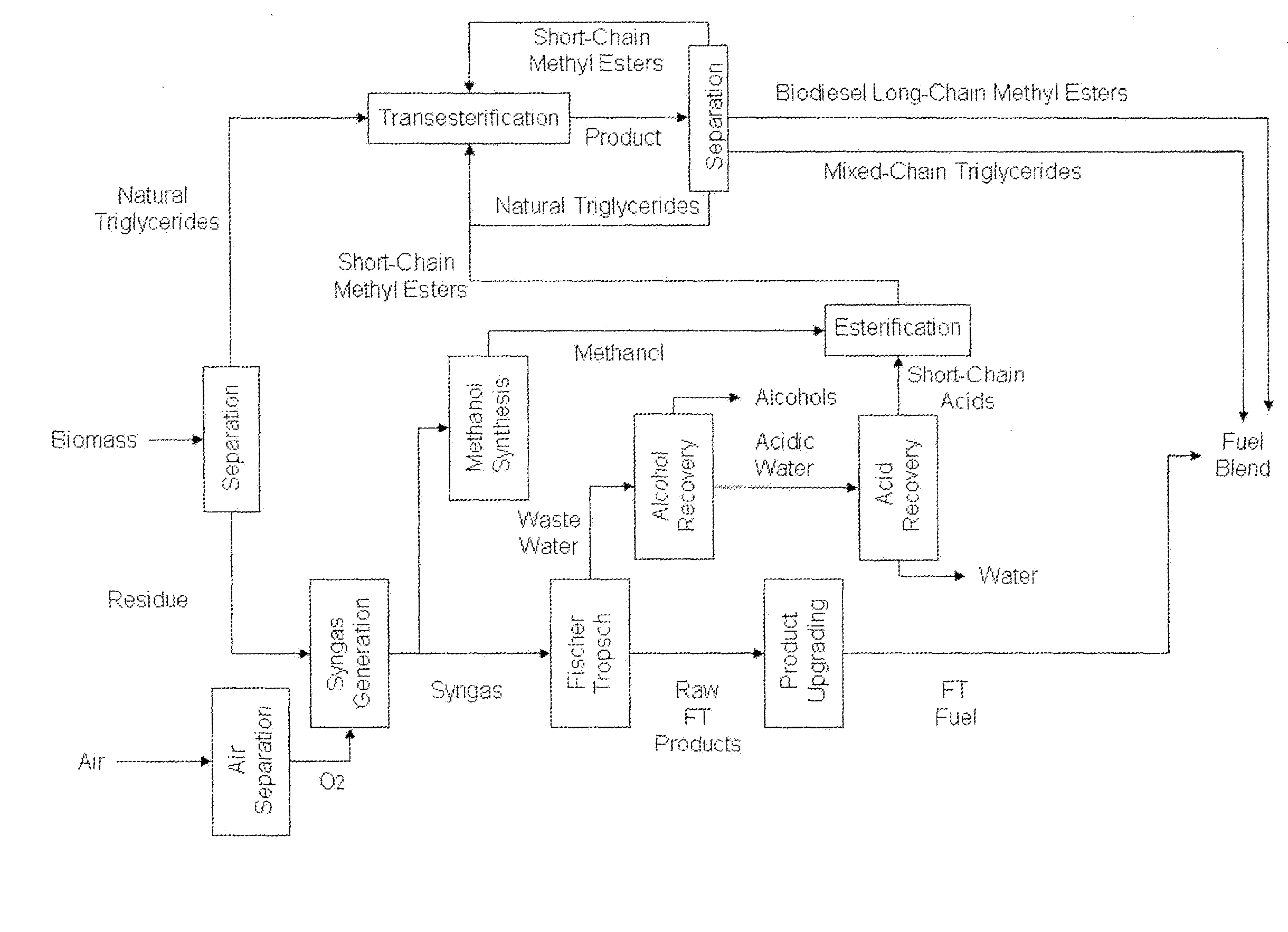Low Melting Point Triglycerides for Use in Fuels
- Summary
- Abstract
- Description
- Claims
- Application Information
AI Technical Summary
Benefits of technology
Problems solved by technology
Method used
Image
Examples
Embodiment Construction
[0017]In the present invention, triglycerides useful for distillate fuels are disclosed along with their method for preparation from Fischer-Tropsch acid by-products and the glycerol by-product from biodiesel generation. The triglycerides of the present invention have a low melting point and a slightly high viscosity making them compatible with distillate fuels.
[0018]The triglycerides of the present invention may be added to a Fischer-Tropsch derived fuel, a petroleum derived fuel, a biodiesel, additives, or combinations thereof. The slightly high viscosity and high density of the triglycerides of the present invention can be used to improve the low viscosity and low density of Fischer-Tropsch derived fuels. In addition, the triglycerides of the present invention are oxygenates and are expected to also improve the lubricity of Fischer-Tropsch derived fuels.
1. DEFINITIONS
[0019]Certain terms are defined throughout this description as they are first used, while certain other terms used...
PUM
| Property | Measurement | Unit |
|---|---|---|
| Linear density | aaaaa | aaaaa |
| Linear density | aaaaa | aaaaa |
| Linear density | aaaaa | aaaaa |
Abstract
Description
Claims
Application Information
 Login to View More
Login to View More - R&D
- Intellectual Property
- Life Sciences
- Materials
- Tech Scout
- Unparalleled Data Quality
- Higher Quality Content
- 60% Fewer Hallucinations
Browse by: Latest US Patents, China's latest patents, Technical Efficacy Thesaurus, Application Domain, Technology Topic, Popular Technical Reports.
© 2025 PatSnap. All rights reserved.Legal|Privacy policy|Modern Slavery Act Transparency Statement|Sitemap|About US| Contact US: help@patsnap.com



